Australia’s rental market was plunged into crisis following the arrival of roughly one million net overseas migrants over 2022–23 and 2023–24.
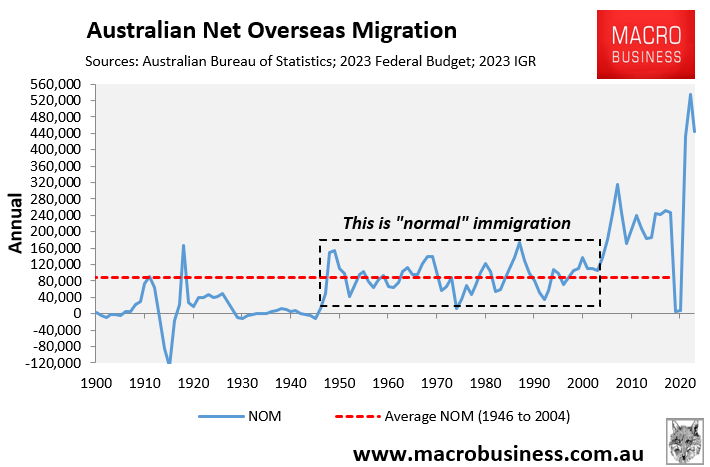
This influx of migrants flooded a supply-constrained market, creating an acute shortage of homes.
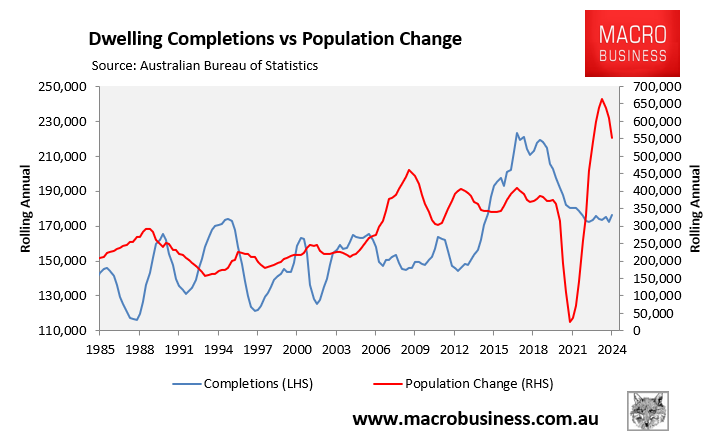
The impact on the rental market was severe, with the Real Estate Institute of Australia’s (REIA) rental vacancy rate roughly halving from the decade average.
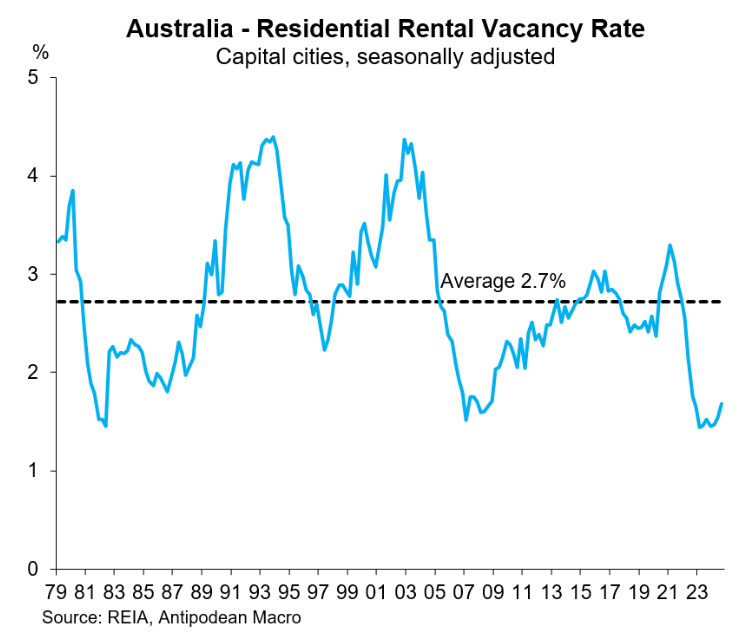
The good news is that after rising by nearly 40%, the growth in asking rents has plumetted amid the slowing of net overseas migration, affordability constraints, and the movement into shared housing.
CoreLogic’s national rental index increased by only 0.1% in the month of December to be 0.4% higher through the December quarter and 4.8% higher over the calendar year.
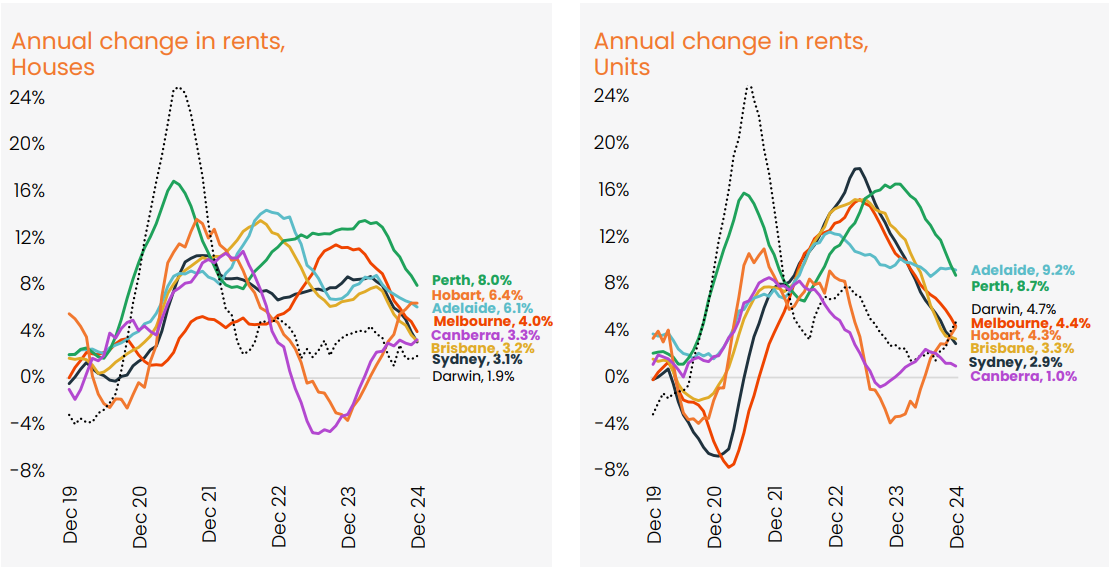
Source: CoreLogic
“This was the smallest December quarter rise in rents since 2018”, said CoreLogic reserach director Tim Lawless.
“On a rolling annual basis, we haven’t seen an annual change this small since the 12 months ending March 2021, following the early COVID patch of weakness”, he said.
“The slowdown in rental growth is apparent across most capital cities and comes amid a reduction in net overseas migration, a trend towards larger capital city households and continued rental affordability challenges”, CoreLogic noted.
“Rental trends are likely to remain subdued in 2025 as overseas migration returns to more normal levels and the average household size continues to trend higher towards pre-COVID levels”.
Despite the improvement in conditions, CoreLogic expects rental affordability to “remain a key challenge leading into 2025”, given that “CoreLogic’s latest metrics showing a record level of rental unaffordability, with the median rent consuming a third of the median household income in September”.
The longer-term outlook for renters is also poor.
The supply side of Australia’s housing market will remain severely constrained by structurally higher costs, elevated interest rates, high rates of builder insolvencies, and ongoing labour shortages.
Meanwhile, the Centre for Population’s latest projections forecast that Australia’s population would balloon by 4.1 million residents over the next 10 years—most of whom will live in Sydney, Melbourne, Brisbane, and Perth.
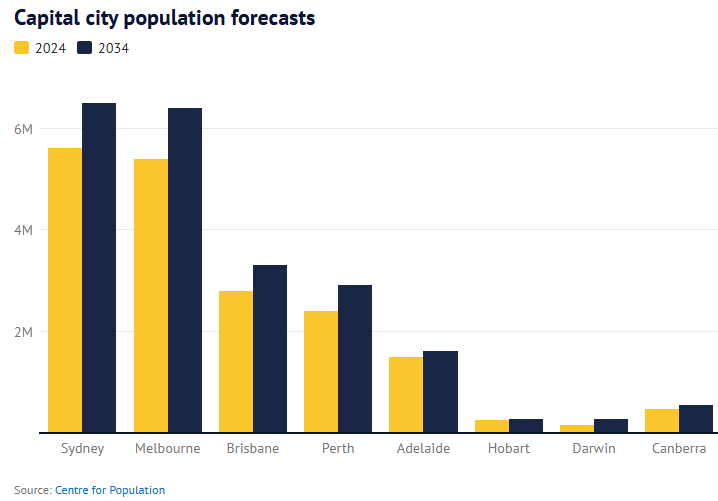
Melbourne is projected to add one million residents over the coming decade; Sydney will add 900,000; and Brisbane and Perth will add 500,000 residents apiece.
According to AMP chief economist, Australia already has a housing shortage of more than 200,000 dwellings.
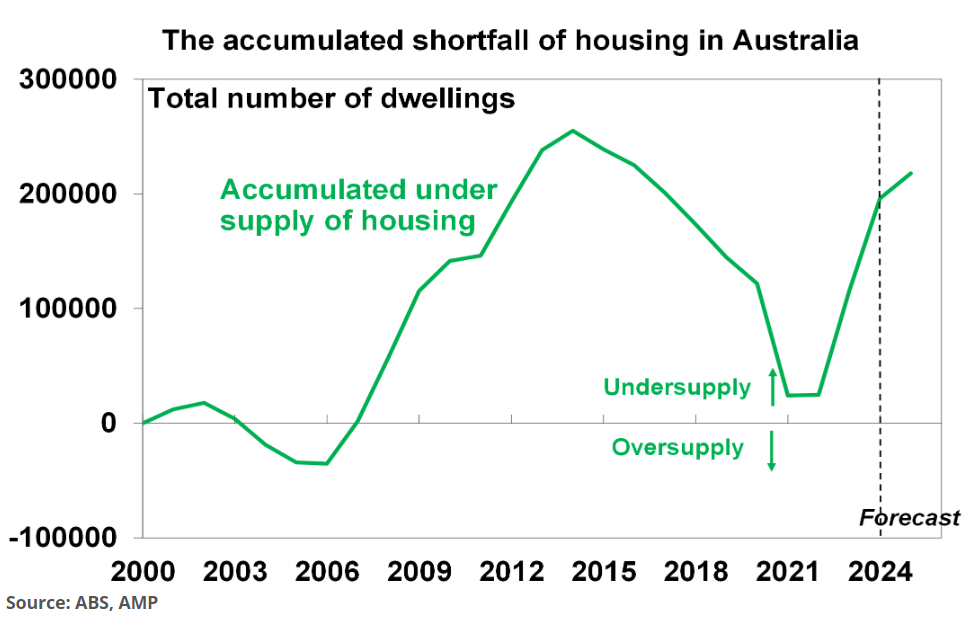
Such rapid population expansion, driven almost entirely by strong net overseas migration, will worsen housing and infrastructure shortages.
The projected 410,000 annual population growth—almost equivalent to the population of Canberra annually—will ensure that population demand forever overruns supply, putting upward pressure on rents.

